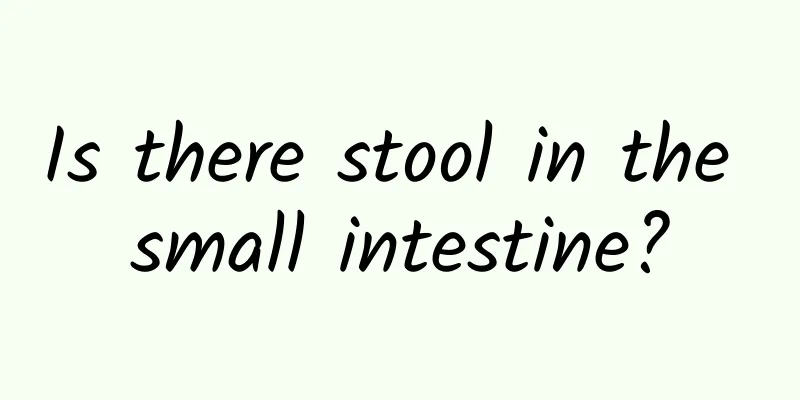Is there stool in the small intestine?

|
The human digestive system is a very large system, and there are many important organs distributed in the digestive system. From the human mouth to the human anus, they are all important digestive system organs. The main function of the small intestine in the human body is absorption. We all know that the main function of the large intestine is to store and reabsorb feces, but is there feces in the small intestine of the human body? The human digestive system includes the mouth, pharynx, esophagus, stomach, pylorus, small intestine, large intestine, rectum, and anus. Among them, the stomach is the place for storing and digesting food, the small intestine has the function of absorbing nutrients, and the large intestine has the function of reabsorbent, especially the ability to absorb water in the intestinal contents. When the intestinal contents run to the rectum, they are completely in the state of feces. It can be seen that the feces are finally discharged through the large intestine, rectum, and anus. Anatomy The upper end of the small intestine starts at the pyloric opening of the stomach and the lower end ends at the ileocecal valve. It is the longest part of the digestive tract, with a total length of 5-7m in adults. According to its position and shape, it is divided into three parts: the duodenum, jejunum and ileum. It is the main place for food digestion and absorption. The diameter of the small intestine gradually tapers from the duodenum (about 3-5cm) downward, and the terminal ileum lumen is only 1.0-1.2cm, so foreign objects are easily entrapped here. Physiological functions The histological and structural characteristics of the small intestine create good conditions for its absorption. The physiological functions of the small intestine include the movement, secretion, digestion and absorption of the capillary enteroids, and are closely related to drug metabolism. For example, various forms of movement of the small intestinal smooth muscle can complete the mechanical digestion of chyme, such as grinding, mixing, and stirring. The small intestinal fluid secreted by the small intestinal glands, together with the bile and pancreatic juice in the small intestine, completes the chemical digestion of chyme. There are many endocrine cells scattered in the small intestinal mucosal secretion, which can secrete a variety of digestive tract hormones, such as secretin, cholecystokinin, gastric inhibitory peptide and motilin, which play an important regulatory role in gastrointestinal motility and secretion. Nutrition and metabolism The chyme enters the small intestine from the stomach and begins digestion in the small intestine. Due to the chemical digestion of pancreatic juice, small intestinal juice and bile, as well as the mechanical digestion of small intestinal movement, the digestion process of food is basically completed in the small intestine. Most of the digested nutrients are also absorbed in the small intestine. Therefore, the small intestine is the most important part of digestion and absorption. |
<<: What is small intestinal dilatation?
>>: Differences between small bowel radiography and colonoscopy
Recommend
Causes of granulation after hemorrhoid surgery
As the saying goes, nine out of ten men and ten o...
What causes cold hands and feet?
Many female friends often encounter the phenomeno...
What is the reason for the growth of buds between the anus and the vagina?
If you find granulation tissue growing between th...
What happens when the mandibular joint is dislocated?
There are many reasons for mandibular dislocation...
It's amazing to see a woman's views on chastity from her personality!
A man's philtrum should be slightly clear and...
How is the effect of interventional treatment for advanced liver cancer?
Late-stage liver cancer is a very serious stage o...
I took Jieyu Pills for a year.
As the pressure of modern society continues to in...
Can mycoplasma and chlamydia heal themselves?
Mycoplasma and chlamydia infections are quite har...
Natural gas poisoning symptoms
Because the use of natural gas has brought great ...
Functions of Senna Extract
We know that senna is a relatively common Chinese...
I have blisters between my toes, what's going on?
The spaces between the toes are itchy and have bl...
What are the symptoms of low potassium levels?
Low blood potassium can easily lead to hypokalemi...
How to take deep-sea fish oil? This is the correct way to take deep-sea fish oil
Deep-sea fish oil is a health supplement commonly...
The efficacy, effects and contraindications of Danggui tablets
Some Chinese medicinal materials are very preciou...
The efficacy of hirudin
Hirudin is the active ingredient secreted by leec...









